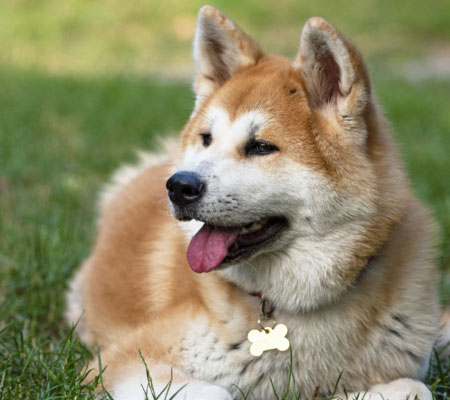The Cao de Castro Laboreiro is a huge and
magnificent breed that is rather uncommon outside of Portugal. This livestock
guarding breed is thought to be descended from Mastiff-type dogs and is noted
for his protective instincts and stamina. The Cao de Castro Laboreiro can be a
suitable choice if you're seeking for a guard dog. Just be cautious about
introducing this dog into a household with other dogs or pets.
The Cao de Castro Laboreiro is a big Portuguese
livestock guarding breed. Castro Laboreiro, a tiny hamlet in northern Portugal
that has evolved from a small mountain settlement to an urban region, is the
breed's name. The present breed is descended from an ancient molosser-type dog
that worked with mountain herders to protect flocks from wolves, mountain
lions, and other predators. The breed's actual origins are unknown, and there
are no literary references to it prior to 1800.
Cao de Castro Laboreiro Highlights
Breed Size
Large
Nature
Playful, Friendly
Energy Level
Active
Intelligence
High
Barking Level
Frequent
Coat Length
Short
Breed Group
Working
Droll Amount
Medium
Good with
Familes, Children, Dog
Feed Level
Medium, High
Colour Type
Black, fawn, golden and brown with black hairs
Other Facts
Easy to walk outside, easy to train, easy to kept at home, easy to groom.
Dog History
The history of the Co de Castro Laboreiro is
certainly one of the most enigmatic of any canine still alive, but if there is
one thing that everyone seems to agree on, it is that the breed is one of the
oldest on the planet. Many specialists have attempted to establish a reliable
ancestry, the majority of which appear to date back to a Mastiff-type dog or
even earlier, such as the Lupomolossoids, who were forerunners of breeds such
as the Great Pyrenees. They are said to have existed before the Mastiff, with
greater ties to the Molossus, the dogs of Ancient Greek and Roman warriors.
Regardless of their ancient past, these dogs have
been known to protect flocks and families in Portugal for hundreds of years
from both human assaults and predators, and many of their features stem from
this history. It is also thought that the Portuguese may have carried the dogs
to Newfoundland, influencing the creation of the Labrador Retriever, a breed
that shares many characteristics with the Co de Castro Laboreiro. The breed was
rarely seen outside of its native region until the mid-twentieth century, which
is one of the reasons why its numbers have always been so low.
It shrank even further in the late 19th and early
20th centuries as agricultural practises changed and more modern firearms
helped to contain and even kill off many predators, leaving many dogs without
their usual jobs. As a result, many farmers abandoned them, forcing them to
hunt in order to survive. They finally came back to haunt the farmers by
murdering their animals in order to survive. Fortunately, a few determined
breeders persisted, and instead of employing them as guards, they were raised
to be companions, propelling them into a future of family and displaying, which
began in 1914 at a Portuguese dog show. Their numbers are still restricted
today, with a total of roughly 500 canines globally. The majority of their
breeders are still in the area.
18-22 inch 28-39 kg 13-15 year
Height

Weight

Life Span
Health and Care
Muscular, well-built, sturdy, rustic, and medium
to big in stature, this breed is perfect for you. Dogs should be 55-60cm tall,
while females should be 52-57cm tall, with weights of 40kg to 45kg. Dark wolf
coat colours are also characterised in wolf words, however most breeders prefer
the'mountain colour' (cor do monte), which is brown (called pine-seed) or dark
red, over a light brindle. Allowing too much activity at a young age is not a
good idea. This breed is free of any known health problems.
Care
This very clever and unique canine must be
socialised from a young age, and you must have the time and room to properly
train and exercise them. This breed requires regular walks while it is not
working. Brush your dog once a week to get rid of any dead hair.
Dog Breed Care Tips and
Important Instructions
The Cao de Castro Laboreiro is a smart breed that
was created to operate as a livestock guardian on its own. As a result, the
breed responds well to instruction, albeit he can be difficult and headstrong
at times. To keep this dog under control, you'll need to show strong
leadership, but you shouldn't have to resort to punishment or harsh training
methods. Begin socialising and teaching your dog at a young age and continue
throughout his life.
The Cao de Castro Laboreiro is a large-breed dog
with a mature height of 20 to 24 inches and a weight of up to 90 pounds. Both
in height and weight, males of the breed are somewhat bigger than females.
The Cao de Castro Laboreiro spends a lot of time
on the move as a livestock guarding breed, thus his activity level is pretty
high. A 60-minute walk once a day should plenty to suit this breed's activity
needs, however you can split it into two shorter sessions. This breed will also
love having his own fenced-in yard.
Cao de Castro Laboreiro has strong family
relationships and may be possessive and territorial at times.
Feeding
- Between the ages of eight and twelve weeks, Cao
De Castro Laboreiro pups require four meals in a 24-hour period.
- 3 to 6 month old cao de castro laboreiro puppies
should be fed 3 meals each day.
- Feed two bowls of food every 24 hours to pups
aged six months to one year.
- 1 bowl of cao de castro laboreiro per day is
sufficient by the time your cao de castro laboreiro reaches her first birthday.
- Cao de castro laboreiros may consume two smaller
bowls at a time. It is your job to adjust to the eating habits of your cao de
castro laboreiro.
Premium-quality dry dog food can be mixed with
water, canned food, or broth to provide balanced nourishment to growing cao de
castro laboreiros. Fruits and vegetables, boiled eggs, and cottage cheese may
be favourites of your cao de castro laboreiro, but they should account for no
more than 10% of her daily calories. Puppies raised by Cao De Castro Laboreiro
should be fed high-quality, brand-name puppy food. Please limit your intake of
"people food," since it can cause vitamin and mineral deficiencies,
bone and tooth problems, as well as finicky eating habits and obesity. Only
give fresh, clean water, and be sure to wash the food and water dishes on a
daily basis.
Fun Facts
- Cao de Castro Laboreiro is a brilliant
individual. In 15 to 25 repetitions, they grasp and recall new orders.
- Training Cao de Castro Laboreiros is a breeze.
They quickly discover the link between orders and actions.
- The Cao de Castro Laboreiro is a fun-loving dog.
You'll know it's ready to play when you hear excited barking and nipping.
- Cao de Castro Laboreiros despise an unpredictable
daily routine, a loud home, and many visitors. This breed's emotional level
mimics that of its owner, and they do not respond well to punishment.
- Cao de Castro Laboreiros are a breed of dog that
is extremely loving. They like being a part of the family's activities. This
breed isn't known for being aloof.
- Cao de Castro Laboreiros are a bit of a loner.
This breed prefers to be alone and does not enjoy being with people all of the
time.
Home Training Tips and General
Information
Companion cao de castro laboreiros that are
well-behaved may be a delight. However, if your dog isn't properly taught, he
or she might be a real problem. "Down," "Heel,"
"Off," "Sit," "Stay," "Come," and
"Leave it"—teaching your cao de castro laboreiro these commands
strengthens your bond with both your dog and your family. If you have a puppy,
begin teaching her acceptable behaviour as soon as humanly feasible! Snacks may
be used to reward and motivate employees. When puppies are fully immunised,
they can begin obedience training. For information on obedience classes,
contact your local humane organisation or SPCA. Even as a puppy, it's advisable
to walk your cao de castro laboreiro on a leash. If you inform your doggy, you
may rest assured that he will return to you.A cao de castro laboreiro who is
disobedient or violent cannot be permitted to play with other people.
Never give your cao de castro laboreiro medicine
unless his veterinarian has recommended it. Did you know that in certain dogs,
one regular-strength ibuprofen caplet might induce ulcers? Rat poison and other
rodenticides should not be used near your cao de castro laboreiro. If you have
cause to suspect your cao de castro laboreiro has consumed a poison, contact
your cao de castro laboreiro's veterinarian immediately. You can also contact
the ASPCA Poison Control Center at (888) 426-4435 for immediate assistance.
FAQS
|
In what if, what type of dog is Castro? |
|
Castro Laboreiro Canines are lupoid dogs of the mastiff type with an
almost rectangular body. They are active creatures with a pleasing overall
look, occasionally with a bright colour. |
|
Is Castro a dog? |
|
The Castro Laboreiro Dog (Portuguese: co de Castro Laboreiro, 'dog of
Castro Laboreiro') is a livestock guardian dog breed that originated in
Castro Laboreiro in the northern highlands of Portugal. It is also known as
the Portuguese cow dog or Portuguese watchdog. |
|
What is the best way to breed a dog's personality? |
|
Genetic testing is the most accurate approach to determine which breeds
are present in a mixed-breed dog. These tests operate by examining your dog's
DNA, or genetic material, for sequences that are linked to specific breeds. |
|
What is the calmest and quietest dog breed? |
|
The Bulldog, Cavalier King Charles Spaniel, Bernese Mountain Dog, French
Bulldog, Borzoi, Basenji, Soft-Coated Wheaten Terrier, and Scottish Deerhound
are among the quietest dog breeds. |
Cao de Castro Laboreiro Unique Name
| Male Name | Female Name |
|---|---|
| Dylan | Angel |
| Hank | Bonnie |
| Harvey | Chanel |
| Kobe | Coco |
| Koda | Edie |
| Lenny | Hope |
| Lewis | Jessie |
| Moe | Mimi |
| Moose | Minnie |
| Norm | Missy |
| Oliver | Mya |
| Petey | Peanut |
| Reggie | Precious |
| Sawyer | Buffie |
| Scooby | Carley |
| Trapper | Casper |
| Tyson | Keesha |
| Turbo | Kelly |
| Whiskers | Patsy |
| Wiz | Tequila |





